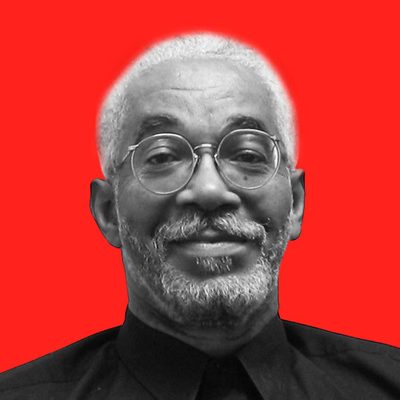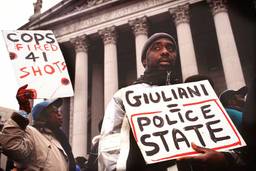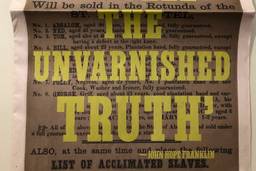The Counterproductive War on Gangs
The conclusion of the report, “Gang Wars: The Failure of Enforcement Tactics and the Need for Effective Public Safety Strategies,” persuasively argues that punitive policies of policing that specifically target gangs increase rather than decrease gang violence
Salim Muwakkil
When it comes to America’s criminal justice policy, the cure is often worse than the crime. Nowhere is this fact more apparent than in the war on drugs, which has inflicted more social damage than drugs themselves. So too with the war on gangs, according to a report by the Justice Policy Institute, released this July.
The conclusion of the 108-page report is evident in its title, “Gang Wars: The Failure of Enforcement Tactics and the Need for Effective Public Safety Strategies.” Written by Judith Greene and Kevin Pranis, the report persuasively argues that punitive policies of policing that specifically target gangs increase rather than decrease gang violence.
“The current preoccupation with gangs is a distraction from very real problems of crime and violence that afflict too many communities,” Pranis said in a press release announcing the study. “Gangs do not drive crime rates, and aggressive suppression tactics simply make the situation worse by alienating local residents and trapping youth in the criminal justice system.”
More police, more prisons and more punitive measures have not stopped the cycle of gang violence, the study notes in the executive summary. The study compares gang suppression efforts in New York, Chicago and Los Angeles and found that gang problems are worse in Los Angeles and Chicago, where police employ stricter enforcement tactics. The authors conclude there is “no evidence that gang enforcement strategies achieved meaningful reduction in violence.”
Los Angeles is cited as a graphic example of the failure in the war on gangs. For at least the last 20 years, the nation’s second largest city has used gang injunctions, special task forces, and databases and enhanced prison sentences to specifically target gangs. But Los Angeles now has six times as many gangs as it did 20 years ago and twice the number of gang members. The authors conclude unequivocally, “Los Angeles is losing the war on gangs.”
The study also reveals that Chicago’s attempts to stem gang violence have had the opposite effect, noting, “a cycle of police suppression and incarceration, and a legacy of segregation, have actually helped to sustain unacceptably high levels of gang violence.”
New York City employs a different strategy. Rather than trying to eliminate gangs, the city focuses on reducing gang violence. Its approach stresses community policing and gang intervention programs that provide jobs, counseling and prevention activities. Gang crimes in the nation’s largest city have decreased dramatically.
The report also examined efforts in Boston, Dallas, Detroit, Indianapolis, Las Vegas, St. Louis and North Carolina. It found no evidence that increased enforcement efforts “had a positive impact on target neighborhoods.”
The authors also criticize politicians who overstate the threat of gang crimes and urge tougher sentences to bolster their tough-on-crime image. Such political posturing is especially egregious, considering the perverse social effects of punitive police policies.
But pushing tough law enforcement is politically popular among constituents inundated by crime-soaked media coverage, and politicians gain little from resisting that push. The corporate media abets punitive policing by inflaming the public’s fear of crime.
One example of this furor is Chicago, where major media has been feasting on the fact that 32 school-aged children have been murdered so far this year. A number of national news shops came to town to “investigate” what they characterized as an epidemic of youth violence. CNN’s Anderson Cooper, for instance, spent a few days in the city to document and dramatize the damaging effects of this “growing culture of violence.”
Predictably, most of the stories focused on “new” reasons kids are killing kids, focusing especially on the spread of gangs, the availability of guns, fractured families and a violent media culture of video games and rap music.
However, in reality, Chicago’s youth are safer from murder today than at any time in at least 40 years, according to figures from the Centers for Disease Control. In 1968, there were 50 murders of youth ages 5-17 in Chicago. In 1994 – the peak year of urban violence in Chicago – the number of murdered school-aged youth was 152.
Since 1995, when the total reached 115, the number of youth murders has stayed below 100. The years 2003 through 2007 have seen some of the lowest numbers in several decades. Rather than focus on this improvement, the media is awash in blood, gore and gang fears.
I make this point not to minimize the unacceptable levels of interpersonal violence that plagues the African-American and Latino communities, but to place that violence in a more realistic context. What’s more, this inaccurate portrayal of new levels of violence, combined with the inordinate focus on gangs and rap, tends to demonize a youthful population already bearing the brunt of social disinvestment.
Salim Muwakkil is a senior editor of In These Times and host of “The Salim Muwakkil Show” on radio station WVON-AM in Chicago. Muwakkil was also contributing columnist for both the Chicago Sun-Times (1993 – 1997) and the Chicago Tribune (1998 – 2005). He is also a co-founder of Pacifica News’ network daily “Democracy Now” program and served as an adjunct professor at Northwestern University, University of Illinois, the Art Institute of Chicago and Chicago’s Columbia College.









